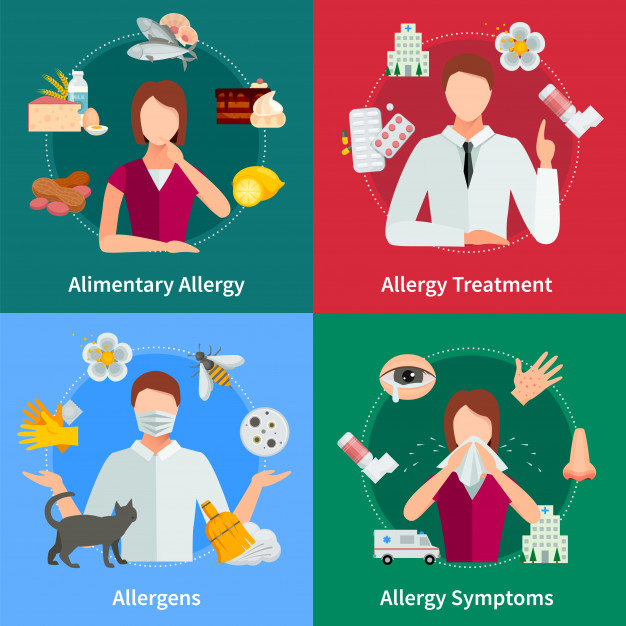
Allergy: Causes, Symptoms, Investigation, and Treatment
Introduction: Understanding the Immunological Misfire Allergy is a prevalent medical condition in which the body’s immune system launches a misguided attack against substances that are otherwise harmless. The commonplace nature of allergies is evidenced by their occurrence in response to triggers such as pollen, animal fur, mites, and certain foods. The manner in which allergies manifest and their potential severity vary, necessitating tailored treatment approaches.
Causes of Allergies: Unraveling the Immunological Puzzle Allergies stem from an immune system error wherein innocuous substances are misconstrued as threats. These substances, called allergens, can be present in the environment, come into contact with the skin, or be ingested as food. On subsequent exposure to the allergen, the immune system releases chemicals like histamine, triggering symptoms like runny noses, itchy eyes, or skin irritation.
Examples of Allergenic Substances (Allergens): Unveiling the Culprits While allergies can develop in response to virtually anything, certain substances are more likely to act as triggers:
- Respiratory allergens in the air: Pollen, mites, mold, and dander from pets like dogs and cats.
- Food allergens: Peanuts, tree nuts, gluten, soy, fish, shellfish, eggs, and dairy products.
- Insect bite toxins: Stings from wasps or bees.
- Medications: Antibiotics and other drugs can induce allergic reactions.
- Contact allergens: Substances like nickel, gold, latex, and other materials that contact the skin.
Symptoms of Allergy: The Multifaceted Array The symptoms of allergies are as varied as their triggers. Allergies can target the airways, eyes, skin, and digestive tract. The intensity of symptoms spans from mild discomfort to severe, life-threatening episodes of anaphylaxis.
Allergy Investigation: Decoding the Allergenic Enigma Determining the source of an allergy is crucial, guiding appropriate management. Investigation typically encompasses:
- Consulting a healthcare professional: Discussing symptoms and suspected allergens with a doctor.
- Allergy tests: Blood tests detecting specific antibodies or skin spot tests using suspected allergens.
- Examinations: Comprehensive evaluation to differentiate between various types of allergies.
Treatment for Allergies: Navigating the Path to Relief Addressing allergies involves a multifaceted approach:
- Avoidance of allergens: When feasible, minimizing exposure to triggers.
- Over-the-counter medications: Mild symptoms can be managed with allergy tablets or cortisone-containing nasal sprays.
- Professional intervention: Severe allergies warrant specialized medical attention.
- Hyposensitization: Allergen-specific desensitization through vaccination in certain cases.
When to Seek Medical Care: Recognizing Red Flags Medical assistance should be sought in the following scenarios:
- Unfamiliar symptoms: When experiencing unfamiliar or uncertain symptoms potentially linked to allergies.
- Ineffectiveness of over-the-counter treatments: If standard medications fail to provide relief.
- Emergency response: Swelling of the throat and lips, coupled with breathing difficulties, warrant immediate medical attention.
Conclusion: Managing Allergies, Navigating Wellness Allergies materialize as a result of the immune system’s erroneous response to innocuous substances, yielding a spectrum of symptoms. Identification of allergens through comprehensive investigation is pivotal for tailored treatment. Whether through allergen avoidance, over-the-counter remedies, or medical intervention, effectively managing allergies hinges upon understanding their triggers and manifestations. In cases of severe reactions, prompt medical care is pivotal for accurate diagnosis and timely management.